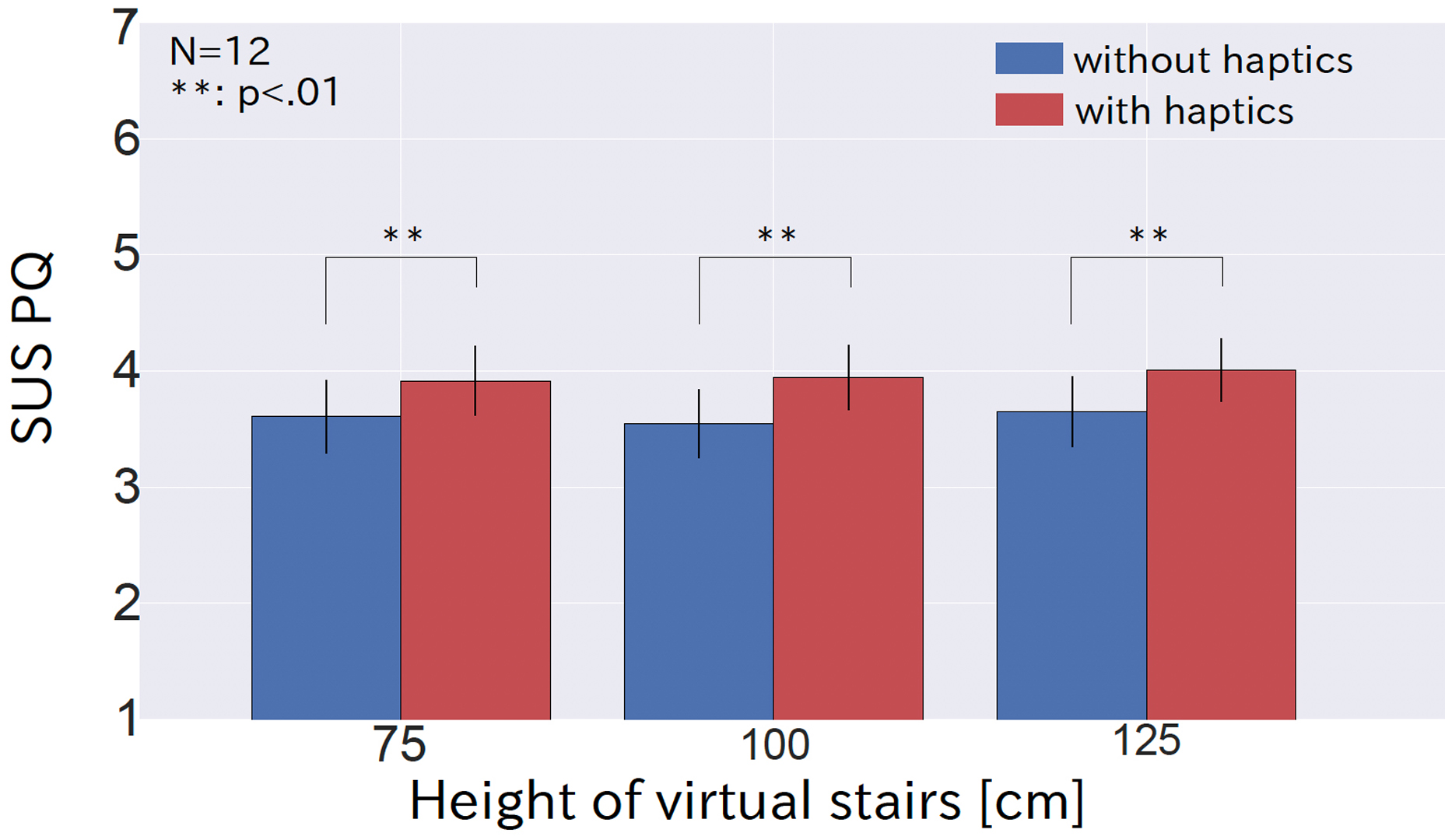“Infinite Stairs: Simulating Stairs in Virtual Reality based on Visuo-Haptic Interaction” by Nagao, Matsumoto, Narumi, Tanikawa and Hirose
Conference:
- SIGGRAPH 2017
-
More from SIGGRAPH 2017:


Type(s):
Entry Number: 14
Title:
- Infinite Stairs: Simulating Stairs in Virtual Reality based on Visuo-Haptic Interaction
Presenter(s):
Description:
In the field of virtual reality, a few methods exist that allow a user to walk up and down the stairs in a virtual environment (VE); however, most of them are based on a complicated device system that generates physical steps using actuators. Because it is difficult for users wearing head mounted displays (HMDs) to keep track of the surrounding environment, walking on physical steps could prove to be very dangerous and lead to injuries. Further, these systems have disadvantages in that the user cannot walk naturally. Therefore, we present ”Infinite Stairs,” which is a novel technique to simulate the sensation of walking up and down the stairs in a VE based on visuo-haptic interaction. The haptic stimuli provided by a small bump under the feet of the users correspond to the edge of the stair in the VE, and the visual stimuli of the stairs and shoes, provided by the HMD, evoke visuo-haptic interaction for the user. ”Infinite Stairs” enables the user to experience any type of virtual stairs, including Penrose stairs, in a virtual reality seeing.
References:
Yuki Ban, Takashi Kajinami, Takuji Narumi, Tomohiro Tanikawa, and Michitaka Hirose. 2012. Modifying an identified curved surface shape using pseudo-haptic effect. Haptics Symposium 2012, HAPTICS 2012 – Proceedings (2012), 211–216. DOI: h.p://dx.doi.org/10.1109/HAPTIC.2012.6183793
Hiroo Iwata, Hiroaki Yano, Hiroyuki Fukushima, and Haruo Noma. 2005. CirculaFloor. IEEE Computer Graphics and Applications 25, 1 (jan 2005), 64–67. DOI:h.p://dx.doi. org/10.1109/MCG.2005.5
Hiroo Iwata, Hiroaki Yano, and Fumitaka Nakaizumi. 2001. Gait Master: a versatile locomotion interface for uneven virtual terrain. Proceedings IEEE Virtual Reality 2001 (2001), 131–137. DOI:h.p://dx.doi.org/10.1109/VR.2001.913779
Maud Marchal, Anatole Lecuyer, Gabriel Cirio, Laurent Bonnet, and Mathieu Emily. 2010. Walking up and down in immersive virtual worlds: Novel interactive techniques based on visual feedback. 2010 IEEE Symposium on 3D User Interfaces (3DUI) (2010), 19–26. DOI:h.p://dx.doi.org/10.1109/3DUI.2010.5446238
Keigo Matsumoto, Yuki Ban, Takuji Narumi, Tomohiro Tanikawa, and Michitaka Hirose. 2016. Curvature manipulation techniques in redirection using haptic cues. In 2016 IEEE Symposium on 3D User Interfaces (3DUI). IEEE, 105–108. DOI: h.p://dx.doi.org/10.1109/3DUI.2016.7460038
Dominik Schmidt, Rob Kovacs, Vikram Mehta, Udayan Umapathi, Sven Köhler, Lung-Pan Cheng, and Patrick Baudisch. 2015. Level-Ups: Motorized Stilts that Simulate Stair Steps in Virtual Reality. Proceedings of the ACM CHI’15 Conference on Human Factors in Computing Systems 1 (2015), 2157–2160. DOI:h.p://dx.doi. org/10.1145/2702123.2702253
Mel Slater, Martin Usoh, and Anthony Steed. 1995. Taking steps: the influence of a walking technique on presence in virtual reality. ACM Transactions on Computer-Human Interaction 2, 3 (1995), 201–219. DOI:h.p://dx.doi.org/10.1145/210079.210084
Keyword(s):
- Virtual stairs
- foot-haptics
- Visuo-haptic interaction
- virtual reality





